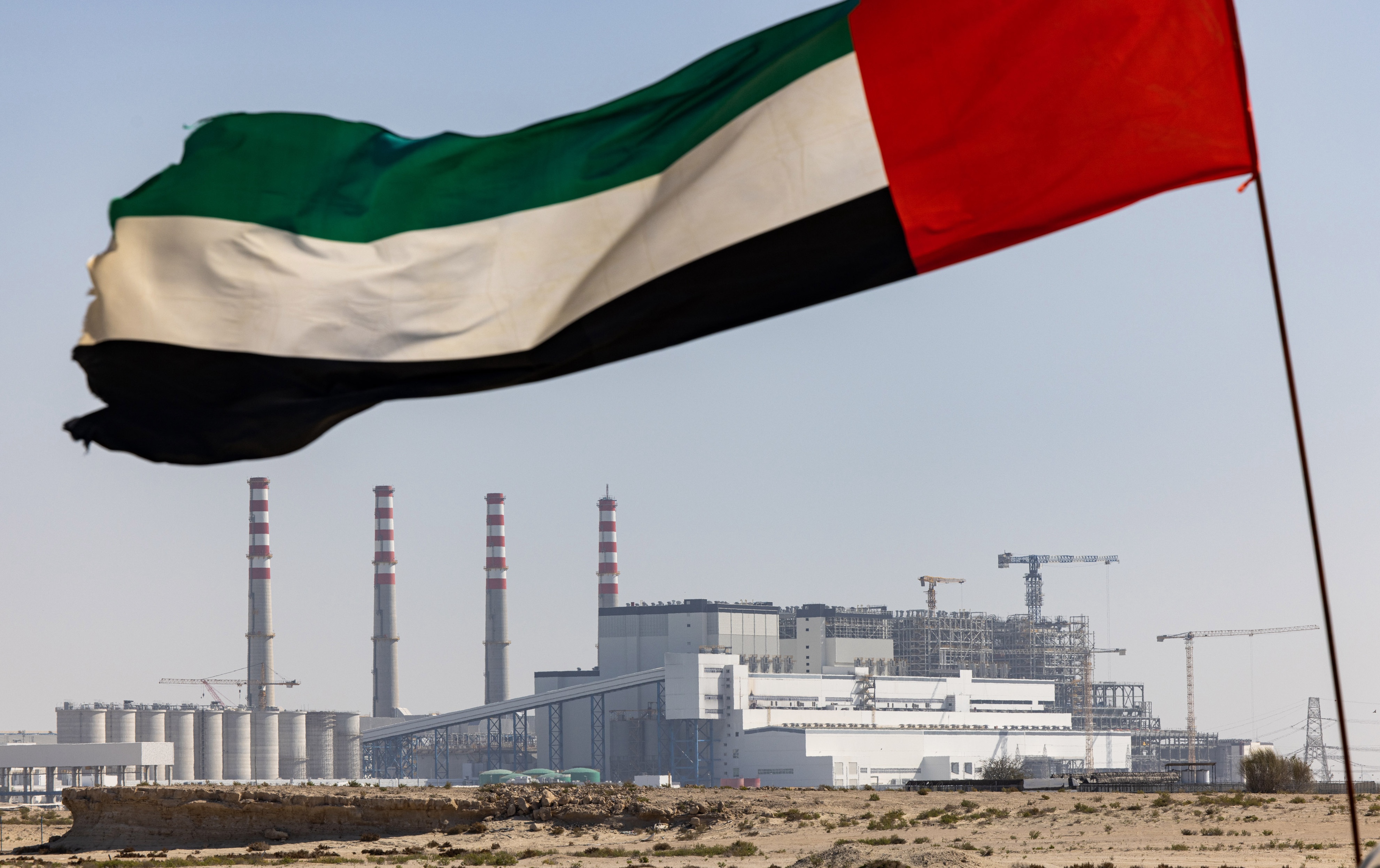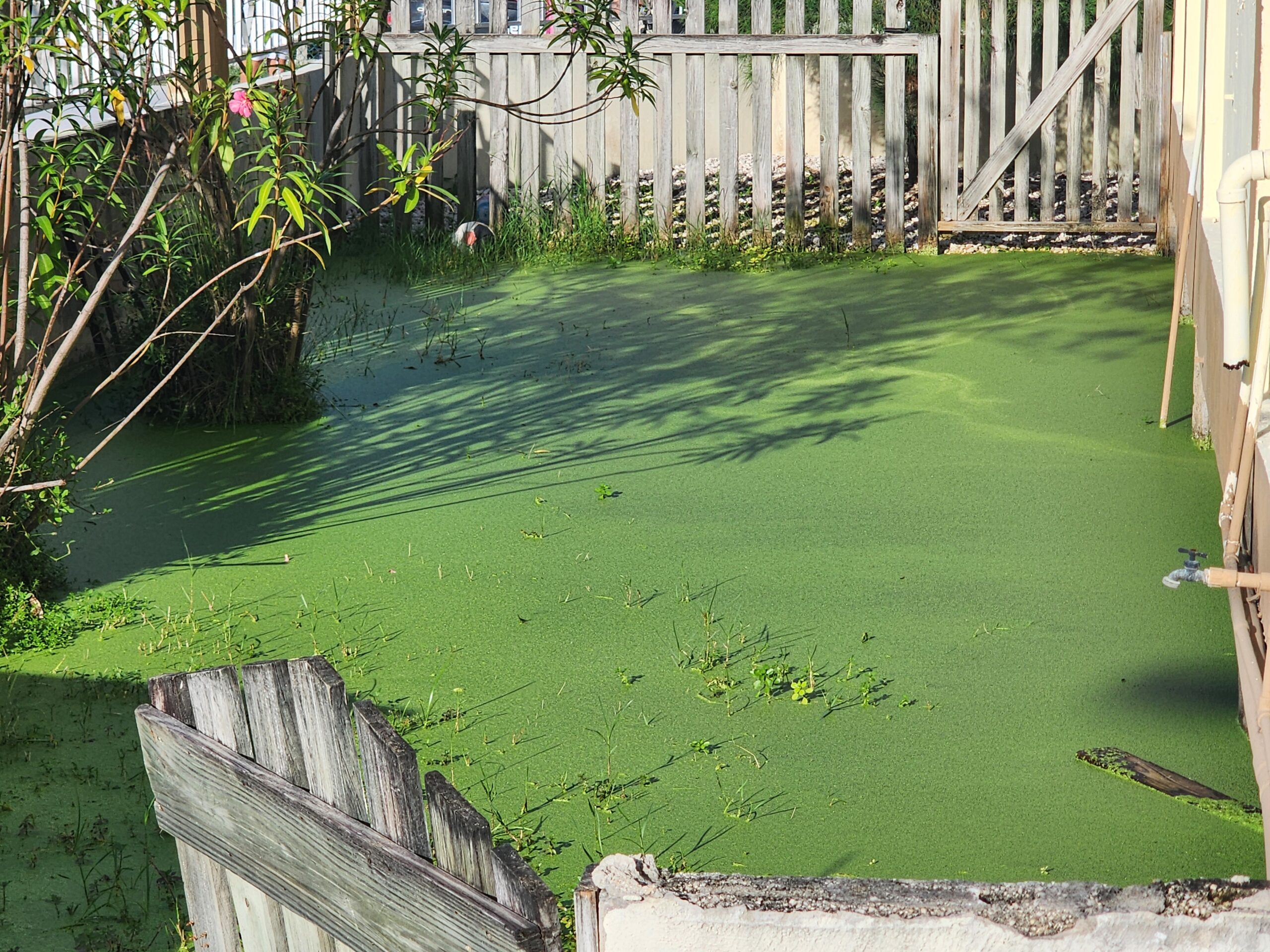Diversifying While Integrating: Industrial Policy Shapes Saudi–US Defense Cooperation – ISPI

Report on Saudi Arabia’s Defense Industrial Policy and Alignment with Sustainable Development Goals
Saudi Arabia is strategically transforming its defense procurement from a transactional acquisition model to an integrated industrial policy under the Vision 2030 framework. This report analyzes the shift, focusing on localization, sustainment, and international cooperation, with significant emphasis on its alignment with the United Nations Sustainable Development Goals (SDGs). The core of this new strategy is to leverage defense spending to achieve broader economic and social objectives, particularly those related to industry, innovation, economic growth, and strategic partnerships.
The Saudi Defense Reform Ecosystem and SDG Alignment
With a 2025 military budget of approximately SAR 272 billion (USD 72.5 billion), representing 21% of total government spending, the defense sector functions as a significant macroeconomic driver. Procurement decisions are now instrumental in shaping domestic employment, technology acquisition, and industrial competitiveness. This has made industrial localization a structural necessity, directly contributing to several key SDGs.
Fostering Economic Growth and Decent Work (SDG 8)
The General Authority for Military Industries (GAMI) has implemented an Industrial Participation Policy that mandates a minimum of 60% localization for defense contracts exceeding SAR 150 million (USD 40 million). This policy is designed to achieve the following objectives aligned with SDG 8:
- Stimulate job creation within the Kingdom.
- Promote the growth of local Small and Medium-sized Enterprises (SMEs) by integrating them into the defense supply chain.
- Retain significant economic value within the domestic economy, converting defense expenditure into a vehicle for national development.
- Incentivize contractors through a credit system that rewards capability development and local sourcing.
This strategic focus has yielded tangible results, with localization rates increasing from 4% in 2018 to 19.35% by 2023, against a target of over 50% by 2030.
Building Resilient Industry and Innovation (SDG 9)
The shift towards domestic production and sustainment is a core component of building a resilient and innovative industrial base, in line with SDG 9. Key aspects of this strategy include:
- Reducing reliance on foreign imports, as evidenced by the Kingdom’s move from the world’s largest arms importer in 2019 to fourth in 2024.
- Anchoring maintenance, repair, and overhaul (MRO) capabilities domestically to ensure operational sovereignty and supply-chain security.
- Facilitating technology acquisition and developing indigenous manufacturing capabilities for components and systems.
International Partnerships for Sustainable Development (SDG 17)
While pursuing industrial self-reliance, Saudi Arabia continues to leverage international partnerships, particularly with the United States, to achieve its development goals. This cooperation has evolved from a simple supplier-customer relationship to a multifaceted partnership focused on co-production and capacity building, reflecting the principles of SDG 17.
The Role of U.S. Cooperation in Capacity Building
The U.S. remains a central partner, supplying approximately three-quarters of Saudi Arabia’s recent arms imports. However, the nature of this cooperation is changing, with an emphasis on long-term industrial collaboration. Examples of these strategic partnerships include:
- A joint venture between Boeing and Saudi Arabian Military Industries (SAMI) to localize MRO for military aircraft.
- An Industrial Participation Agreement (IPA) between GAMI and Raytheon for localizing Patriot missile system maintenance.
- Subcontracts awarded by Lockheed Martin to Saudi firms for the Terminal High Altitude Area Defense (THAAD) system.
These initiatives convert security interoperability into industrial capability, embedding U.S. cooperation within the Kingdom’s localization framework and contributing to SDG 9.
Modernizing Security for Peace and Strong Institutions (SDG 16)
Joint military exercises and training programs, such as Red Sands, have shifted focus from basic skills to developing advanced tactics for emerging threats like unmanned aerial systems. This evolution in training aims to build strong, effective, and capable security institutions, a key target of SDG 16, thereby enhancing national and regional stability.
Challenges in Diversification and Strategic Autonomy
Riyadh’s path towards industrial autonomy faces challenges, primarily related to technology transfer restrictions and geopolitical uncertainties, which in turn drive a strategy of diversification.
Navigating Geopolitical Risks and Strategic Hedging
Concerns over the reliability of external security guarantees, highlighted by the 2019 attacks on Aramco facilities and the subsequent repositioning of U.S. assets, have reinforced Saudi Arabia’s strategy to hedge its security dependencies. This has led to the pursuit of a broader security architecture, including a mutual defense pact with Pakistan. This diversification of partnerships aligns with SDG 17 while aiming to build a more resilient security posture supportive of SDG 16 (Peace, Justice, and Strong Institutions).
The Evolving Technological Landscape
The global market for emerging defense technologies, such as unmanned systems and electronic warfare, is increasingly multipolar. U.S. risk aversion regarding technology transfer, governed by regulations like ITAR, often limits localization to assembly and maintenance. This creates opportunities for European and Asian suppliers willing to offer more comprehensive industrial terms, pushing Saudi Arabia to diversify its supplier base to accelerate progress towards the innovation targets of SDG 9.
The Life-Cycle Paradox and Sustainable Industrialization
A central challenge in Saudi Arabia’s defense reform is the “life-cycle paradox,” which contrasts the high capability of advanced foreign systems with the high cost and dependency of their long-term sustainment. Addressing this paradox is crucial for achieving fiscal sustainability and the goals of SDG 9.
The Royal Saudi Land Forces exemplify this dynamic. The force operates under a dual structure:
- High-End, High-Dependency Platforms: U.S.-supplied systems like the M1 Abrams tank and M2 Bradley fighting vehicle offer formidable capabilities but lock the Kingdom into expensive, foreign-dominated sustainment pipelines that can account for up to 70% of a platform’s total life-cycle cost.
- Localized, Sustainable Systems: Domestically produced assets such as small arms, ammunition, and certain armored vehicles are less technologically advanced but offer greater cost-effectiveness, operational sovereignty, and direct alignment with Vision 2030’s goals for job creation (SDG 8) and industrial resilience (SDG 9).
Conclusion: Integrating Diversification for Sustainable Security
Saudi Arabia is navigating a complex transition, balancing the need for advanced military capabilities with the strategic imperative of building a sustainable, self-reliant industrial base. The Kingdom’s strategy involves a sequenced approach of localization, capacity-building, sustainment reform, and deliberate diversification of international partners. By embedding its defense modernization within the Vision 2030 framework, Riyadh is actively aligning its security policy with the Sustainable Development Goals, particularly SDG 8 (Decent Work and Economic Growth), SDG 9 (Industry, Innovation, and Infrastructure), SDG 16 (Peace, Justice, and Strong Institutions), and SDG 17 (Partnerships for the Goals). This integrated approach will define the future of its defense sector and its role as a strategic international partner.
Analysis of Sustainable Development Goals in the Article
1. Which SDGs are addressed or connected to the issues highlighted in the article?
The article on Saudi Arabia’s defense industry reforms and its cooperation with the United States connects to several Sustainable Development Goals (SDGs). The primary focus on industrial policy, economic diversification, job creation, and international partnerships directly aligns with the following SDGs:
- SDG 8: Decent Work and Economic Growth: The article emphasizes Saudi Arabia’s “Vision 2030,” which recasts the defense sector as an “industrial policy—a vehicle for jobs, technology acquisition, and for retaining some value locally.” This strategy aims to use large-scale military procurement to stimulate domestic economic activity and create employment.
- SDG 9: Industry, Innovation, and Infrastructure: This is a central theme of the article. The push for “localization,” building a domestic defense industry, technology transfer, and creating industrial infrastructure like Maintenance, Repair, and Overhaul (MRO) hubs are all core components of SDG 9. The article states that “industrial localization a core element of the Saudi defense policy.”
- SDG 16: Peace, Justice, and Strong Institutions: While the article focuses on the military sector, it highlights the development of strong national institutions to manage this sector effectively and ensure national security. The creation and role of the General Authority for Military Industries (GAMI) as a “defense industry regulator” that has “codified this into binding policy” is a clear example of institutional development aimed at strengthening the state’s capacity for security and governance.
- SDG 17: Partnerships for the Goals: The entire article is framed around the evolving partnership between Saudi Arabia and the United States. It also discusses the diversification of partnerships to include other nations like Pakistan, Turkey, Spain, and South Korea. These collaborations, including “joint ventures, and licensing,” are crucial for achieving the Kingdom’s industrial and technological goals.
2. What specific targets under those SDGs can be identified based on the article’s content?
Based on the article’s discussion of Saudi Arabia’s defense strategy, several specific SDG targets can be identified:
- Under SDG 8 (Decent Work and Economic Growth):
- Target 8.2: Achieve higher levels of economic productivity through diversification, technological upgrading and innovation. The article directly addresses this by describing how Saudi Arabia is using its defense sector to diversify its economy beyond oil. The focus on “technology acquisition,” “maintenance know-how,” and moving from being an importer to a domestic producer reflects a strategy of technological upgrading and innovation.
- Under SDG 9 (Industry, Innovation, and Infrastructure):
- Target 9.2: Promote inclusive and sustainable industrialization and, by 2030, significantly raise industry’s share of employment and gross domestic product. The article’s core theme is the “localization” of the defense industry. The explicit goal to raise the localization percentage from 4% in 2018 to “over 50% by 2030” is a direct alignment with this target.
- Target 9.b: Support domestic technology development, research and innovation in developing countries. The article discusses Saudi Arabia’s efforts to move beyond simple assembly and acquire “software rights and sustainment liabilities.” The frustration with U.S. restrictions on “technology transfer” and the push for “co-production” and localizing “Patriot deep maintenance” highlight the Kingdom’s ambition to foster domestic technological capabilities.
- Under SDG 16 (Peace, Justice, and Strong Institutions):
- Target 16.6: Develop effective, accountable and transparent institutions at all levels. The article highlights the role of the General Authority for Military Industries (GAMI) as the “defense industry regulator.” GAMI’s implementation of a binding “Industrial Participation Policy” with clear rules, such as the requirement for a formal proposal for contracts over SAR 150 million, demonstrates the development of an effective and transparent institution to govern the sector.
- Under SDG 17 (Partnerships for the Goals):
- Target 17.17: Encourage and promote effective public, public-private and civil society partnerships. The article provides concrete examples of such partnerships, including the “joint venture” between Boeing and Saudi Arabian Military Industries (SAMI) to localize maintenance and repair, and subcontracts awarded by Lockheed Martin to Saudi firms for the THAAD system.
3. Are there any indicators mentioned or implied in the article that can be used to measure progress towards the identified targets?
Yes, the article contains several specific quantitative and qualitative indicators that can be used to measure progress towards the identified targets:
- Indicator for Target 9.2 (Promote industrialization): The article provides a direct, quantifiable indicator for localization. It states that localization has risen “from 4% in 2018 to 19.35% by 2023, with the Kingdom targeting over 50% by 2030.” This percentage of domestic value in defense contracts is a clear metric of progress.
- Indicator for Target 16.6 (Develop effective institutions): The article mentions GAMI’s “Industrial Participation Policy,” which mandates that “at least 60% of the contract’s value be localized” for contracts above SAR 150 million. The existence and enforcement of this policy serve as a qualitative indicator of institutional effectiveness.
- Indicator for Target 8.2 (Economic diversification): The shift in Saudi Arabia’s global ranking as an arms importer, moving “from being the world’s largest arms importer in 2019 to fourth place in 2024,” is an implied indicator. It reflects a “reweighting of value toward domestic sustainment and production,” signaling a structural shift in the economy.
- Indicator for Target 17.17 (Promote partnerships): The formation of specific joint ventures and agreements, such as the “joint venture” between Boeing and SAMI and the “Industrial Participation Agreement (IPA) with Raytheon,” are concrete indicators of successful public-private partnerships being established.
- Indicator for Target 9.b (Support domestic technology): The article mentions the creation of “Centers of Excellence in land systems” and local manufacturing of “THAAD missile parts.” These are tangible indicators of building domestic absorptive and technological capacity.
4. Table of SDGs, Targets, and Indicators
| SDGs | Targets | Indicators |
|---|---|---|
| SDG 8: Decent Work and Economic Growth | 8.2: Achieve higher levels of economic productivity through diversification, technological upgrading and innovation. |
|
| SDG 9: Industry, Innovation, and Infrastructure |
9.2: Promote inclusive and sustainable industrialization.
9.b: Support domestic technology development, research and innovation. |
|
| SDG 16: Peace, Justice, and Strong Institutions | 16.6: Develop effective, accountable and transparent institutions at all levels. |
|
| SDG 17: Partnerships for the Goals | 17.17: Encourage and promote effective public, public-private and civil society partnerships. |
|
Source: ispionline.it

What is Your Reaction?
 Like
0
Like
0
 Dislike
0
Dislike
0
 Love
0
Love
0
 Funny
0
Funny
0
 Angry
0
Angry
0
 Sad
0
Sad
0
 Wow
0
Wow
0














































.jpg.webp?itok=0ZsAnae9#)







:focal(1500,1000)/https://media.globalcitizen.org/a6/9a/a69a4720-d8a1-4715-b596-18738d03c05c/rotary_polio_hero_image.jpg?#)

/countries/sri-lanka/photo-credit---dmc-sri-lanka.tmb-1200v.jpg?sfvrsn=dc298bcc_1#)



















